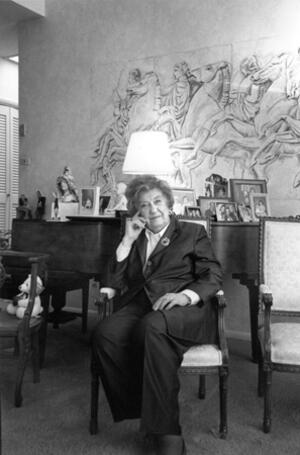Sarah Kappelman Harris
Sarah Kappelman Harris divides her life into three parts: her family, her work with Hadassah, and her work with HIAS (Hebrew Immigrant Aid Society). Born in 1910 to Russian immigrant parents and raised as an Orthodox Jew, Sarah attended Goucher College, graduating with a degree in Romance Languages in 1930. She taught Latin and worked at the May Company clothing store before marrying Leroy Kappelman in 1938. Sarah dedicated herself to raising her three daughters, Marsha, Victoria, and Carol, while volunteering for Jewish community organizations. Through her local and national leadership roles in Hadassah, Sarah met many prominent people, including Eleanor Roosevelt, Helen Keller, Hubert Humphrey, and Henrietta Szold. At HIAS, Sarah performed work that deeply touched her heart, meeting new immigrants as they arrived in Baltimore. Following the death of her first husband, Sarah married Herbert Harris in 1980. Sarah has lived in accordance with her conviction that Jewish women are essential in transmitting Judaism to their families.
Sarah describes her childhood growing up in Washington, DC. She was raised by foreign-born parents but Americanized as a youth. Sarah talks about her relationship with Judaism as a child and how being the only female child deepened her relationship with her father. She reflects on her family's emphasis on religion and how she attended Hebrew School every afternoon. Sarah discusses how different languages played a role in her life, both as a student and a teacher. While still in school, she began working for the May Company, first as an assistant buyer, then buyer, and eventually as head of the Bureau of Adjustment, working with the public. The position allowed her to meet Eleanor Roosevelt for the first time. She describes the unconventional way she met her first husband and why she still holds his last name (Kappelman). Sarah has since remarried after her first husband's death. Sarah discusses how customs and business, as well the role of women, have changed in her lifetime. Sarah recalls how she got to Hadassah, eventually becoming the President of Junior Hadassah. She raised money for a children's home in Israel in the role. Her hard work often complicated her personal relationships, given the amount of time invested in her projects. After becoming president of Hadassah, Sarah remarried and moved to Washington, D.C. Sarah concludes by sharing her thoughts on Judaism and her father's story.



